"Arisaka" Russian soldier
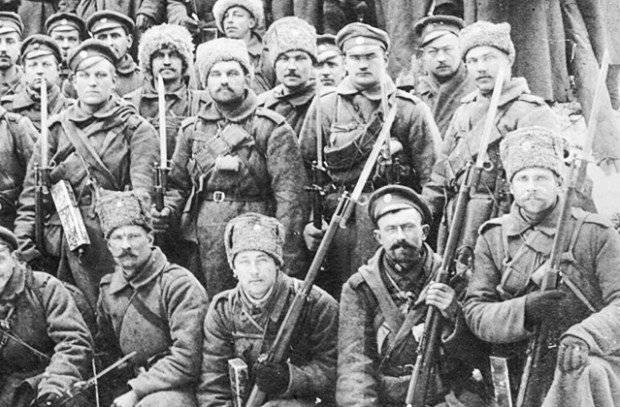
How Japanese gunsmiths helped stop the German offensive and secure Lenin
During the First World War, one of the main allies of Russia, after England and France, was yesterday's enemy - the island empire of the Rising Sun. From 1905 to 1914, the Russian military command in the Far East actively prepared for revenge for the failures of the Russo-Japanese War. The two empires — the Russian tsar and the Japanese Mikado — still remained rivals in the matter of subjugating northern China. But the beginning of the world conflict made the Russian monarchy forget the old insults and turn for help to a recent enemy and rival. The reason for this was simple - the 1914 year showed that the multimillion Russian army was simply not enough rifles.
“In order not to overload the uselessly burdened warehouses”
In the wake of the patriotic upsurge, Russia successfully conducted a general mobilization, following which the army exceeded 5 million 300 thousand people. And then the General Staff suddenly realized that such an army lacked at least 300 thousands of rifles for armament.
It is curious that on the eve of the war the stock of rifles was and even with an excess. But in 1912 — 1914, the 180 of thousands of new “three lines” —Mosin rifles that were in service with the Russian army — were sold abroad, and in order to save, the mobilization reserve plan was reduced by 330 thousand trunks. At the initial stage of the war, the situation could improve the old weapon - until the end of 1910, a large stock of nearly a million Berdan rifles was stored in warehouses. However, as stated in the order of the Minister of War, "in order not to overwhelm the useless and already burdened warehouses," half of their stock was sold, turned into hunting, or corny, was scrapped.
The initial lack of everything in 7% of the required number of barrels might not seem fatal. However, war tends to destroy weapons even faster than people. If in August 1914, the shortage of rifles was 300 thousand, by November it had grown to 870 thousand. That is, monthly troops at the front lost on average 200 thousands of rifles
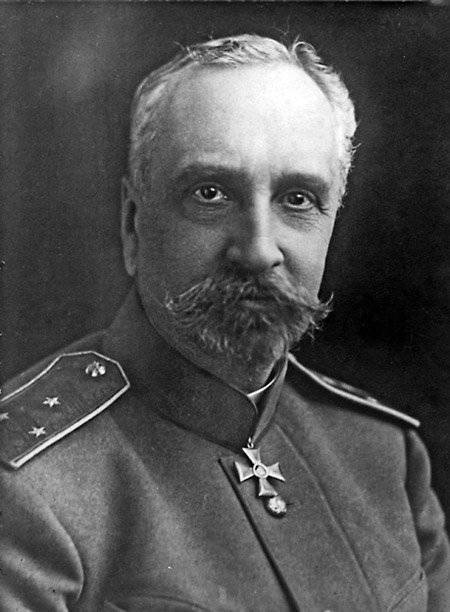
The problem was complicated by the fact that this deficit could not be covered by the growth of industrial production. On the eve of the war, the Russian General Staff considered that the monthly need for new rifles during the big war would not exceed 60 thousand. And in August 1914, all three plants that produced rifles in Russia (Tula, Izhevsk and Sestroretsky), together produced no more than 44 thousand Mosin rifles. Thus, Russian gunsmiths needed to increase their production almost five times. But with all their desire, Russian state-owned factories could not do this - in two years of war they could only triple the production of rifles.
In principle, a similar situation exists in all other warring countries. For example, Germany until September 1914 produced only 25 thousands of rifles per month. But its industry, unlike the Russian one, had a much greater mobilization potential, and within six months, German plants produced 250 thousands of rifles monthly - five times more than in Russia. Similarly, other countries came out of the situation - England, France, Austria-Hungary, which had much more developed machine-building and metalworking branches.
The fact that the shortage of small arms could not be overcome on their own was understood by the Russian General Staff as early as August of 1914. Naturally, the question arose about buying weapons abroad. But outside of Russia, no one “mosinki” produced, and the establishment of their production at foreign factories took time. At the same time, immediately deciding to buy foreign rifles was also difficult - the other system required a different cartridge, and tens of millions required them for tens of thousands of rifles. The Russian generals were still undecided on such monstrous expenses in August 1914. Therefore, in the General Staff to someone who has remained for stories by an unknown, an almost ingenious, as it seemed at first, thought came to her: to buy Russian rifles from Japan, which she received as trophies of the 1904 — 1905 war.
Manchuria instead of Mexico
It was assumed that in a year and a half of the Russo-Japanese War, the trophies of the Land of the Rising Sun could have been made up to 100 thousands of trehlineas. Therefore, on August 25, a “special military technical commission” headed by Major General Hermonius, 50, went to Japan from St. Petersburg to Japan.
Edward Karlovich Germonius was an ethnic Swede and an experienced military engineer. It is curious that after 1917, at the height of the Civil War, he will actively help the white army of Yudenich to attack Red Petrograd. And the former capital of the Russian monarchy will be defended against the whites, among others, by his son, the commander of the Red Guard battalion, the former lieutenant of the tsarist army, Vadim Germonius. General Hermonius will die in exile in Beirut in 1938, having learned that his son, who had become a red general, was shot dead in Moscow as a Trotskyite a year earlier.
But all these family and political dramas will happen much later, but in the history of Russia another drama has flared up - the armory. In September 1914, the Japanese authorities responded to General Hermonius that all captured Russian rifles had long been sent to the scrap, but they still found unnecessary rifles for Japan for the Russians.
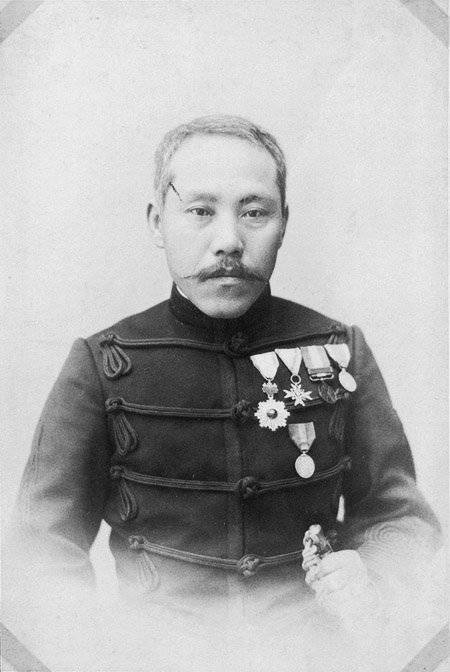
Mitsui Corporation proposed to General Hermonius to buy cheap 35 thousands of rifles and carbines, which were made at the Tokyo factories by order of Mexico. The fact is that while this order was being fulfilled, a civil war and military intervention by the United States began in Mexico. The Japanese did not want to annoy Washington, and the rifles produced were never shipped and lay in warehouses. Therefore, the Japanese offered them unnecessary rifles very cheap - 30 yen apiece. At the rate of 1914, it was about 29 rubles, despite the fact that the “three-line” factory produced at Russian factories cost 37 to 45 rubles. Together with the rifles of the “Mexican order”, the Japanese offered 23 millions of rounds of ammunition to them.
It is curious that neither the Russians, nor the Japanese, nor the German cartridges approached the "Mexican" rifles of the Mauser system, but the cartridge adopted for service in Serbia was suitable. In August, 1914, Russia provided assistance to Belgrade, including by supplying its deficient rifles and ammunition. The Japanese 35 of thousands of barrels for Russia were a drop in the ocean, but for Serbia they could be a significant help, moreover, suitable for a Serbian cartridge.
October 13 1914 of the year, General Hermonius signed a contract for "Mexican guns". For 35 thousands of rifles and carbines and 23 of a million rounds, Russia paid the most stable currency at that time, transferring 200 thousand British pounds sterling through London banks to Mitsui accounts (about 2 million rubles at the rate of 1914 of the year). It was the first purchase of foreign weapons by the Russian Empire during the First World War, and in the next three years it will buy more than a hundred times more imported rifles - 3 million 700 thousands.
The first purchase of imported weapons went swiftly - the Russian steamer Erivan, loaded with Mexican guns, left the port of Yokohama on October 17. At this point, the Russian General Staff found that the situation at the front no longer allows even such a small and exotic party of barrels to be abandoned in favor of Serbia. And the ship “Erivan” was deployed to the port of Dayren on the Kwantung Peninsula of China, the former Russian port of Dalniy, inherited by the Japanese on the basis of the 1904-1905 war. From there, Mexican rifles entered Harbin, located nearby, to re-equip regiments of the Russian border guards in Manchuria, and the three-line guards they surrendered were sent to the active army.
The 35 of thousands of “trilineas” arrived from the Far East made it possible to arm only two divisions and did not solve the deficit problem, and the Russian command decided to do massive purchases abroad. Rifles required hundreds of thousands, and therefore they could not be ordered from small countries. England and France themselves did not increase the production of rifles for their armies, the United States was far beyond the ocean, and the closest to Russia was from countries with developed industry that were not occupied by urgent military production, was all the same Japan.
Rifles in exchange for China
Formally, Tokyo from August 23 1914 was in a state of war with Germany, but in fact Japan was opposed by no more than 4 thousands of Germans in the German colony of Qingdao on the coast of China. In St. Petersburg, they hoped that the Japanese would quickly agree to sell part of their rifles to Russian army stocks.
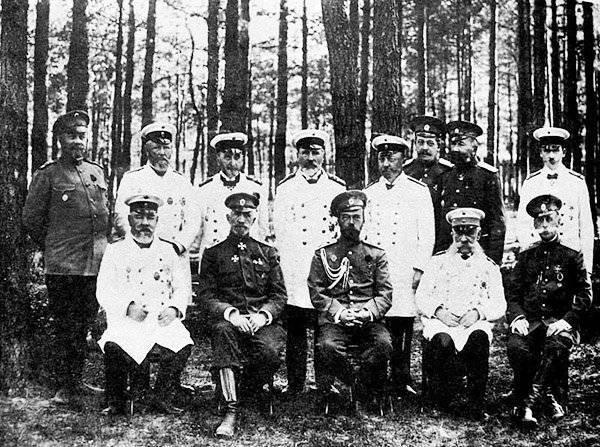
Major-General Hermonius, who remained in Tokyo, received an order to buy "up to a million rifles, in service with the Japanese army, with a thousand rounds of ammunition." This request was received by the Japanese generals without enthusiasm. After difficult negotiations, they agreed to sell Russia 200 thousands of outdated rifles and only 100 cartridges for each. At the same time, the Russians were warned that the cartridges would be old, with expired storage from warehouses in the garrisons of Korea.
It was a question of a Japanese rifle, created at the end of the 19th century by Colonel Nariake Arisaka, who led the Tokyo Arsenal. It was with this rifle, adopted by the Russian-Japanese war, that the same Arisaka, already general, improved his rifle. The new model of the Arisaki rifle began to come into service with the Japanese army from the 1910 year, and the previous models of the year 1897 went to the warehouses. Now, some of them had to go to Russia on the German front.
The main problem for the Russian steel ammunition. A hundred charges on the barrel - a ridiculous supply for a world war. But the Japanese, considering the profitable sale of old rifles at the same time, frankly did not want for the sake of Russia to reduce their mobilization stocks of ammunition. As a result, they made a mocking concession, agreeing to increase the number of cartridges sold on 25 for each rifle.
The contract for the purchase of 200 thousands of rifles and 25 million cartridges was signed on October 21 1914. The purchase cost Russia in 4,5 million rubles in gold, which in wartime was not at all expensive - one old Japanese rifle without cartridges delivered to the port of Vladivostok cost the treasury only 16 rubles. However, by the end of the year less than half came from Japan, only 80 790 rifles. True, even this number somehow improved the situation at the front, as it was equal to the entire production of rifles in Russia in a month and a half.
The rest of the weapons under this contract arrived in Russia only at the beginning of 1915. By this time Petersburg had already turned to Tokyo with new requests for the sale of rifles.
Even 23 December 1914, the Minister of War Sukhomlinov sent a letter to Foreign Minister Sazonov, which said: “At present, the military department faces the difficult task of acquiring a significant number of rifles in the shortest time. The measures taken in this regard, including the purchase of 200 thousands of rifles in Japan, proved to be insufficient, and now the urgent need to acquire at least 150 thousands more rifles is urgently needed. In view of the above, I have the honor to humbly ask Your Excellency to instruct our ambassador in Japan to enter into intercourse with the Japanese government about selling us more 150 thousands of rifles with as many cartridges as possible. ”
While there was bureaucratic correspondence between the Military Department and the Russian Foreign Ministry, while the request was sent to Japan, all new insistent requests for weapons came from the front and as a result, in January 1915, the Ambassador Extraordinary and Plenipotentiary of Russia under His Majesty the Emperor of Japan (this was the name given to ) Nikolai Malevsky-Malevich officially asked Tokyo to sell 300 thousands of rifles.
The Japanese agreed to sell only the 100 of thousands of the most worn-out old-style rifles of “very dubious dignity,” as General Hermonius described them after inspection. However, belligerent Russia could not be too choosy, and 28 in January 1915, Hermonius signed a new contract for the supply of 85 thousand rifles and 15 thousand carbines of the 1897 model, and 22,6 million different cartridges for a total of 2 million 612 thousand yens (about 2,5 million rubles). In addition, the Japanese agreed to sell the 10 million new-pointed cartridges to the Russians, the contract for which was signed by February 3. The Russian side took into account the previous delays with the transfer of the purchased weapons, and mid-April 1915 was determined as the delivery time.
The Japanese refused to sell more rifles. Japanese Foreign Minister Kato Takaaki at a meeting with Russian diplomats deliberately stated that the selling of rifles allegedly does not allow the Minister of War Oka Itinosuke. In reality, diplomatic bargaining began around the supply of large quantities of Japanese weapons.
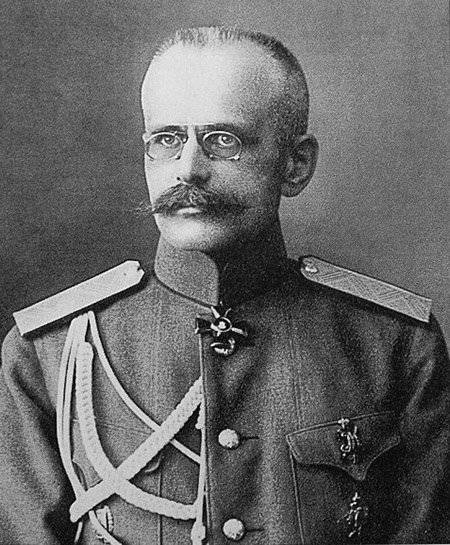
The Japanese government, just in January 1915, taking advantage of the fact that all the powers of the great powers were engaged in a war in Europe, issued an ultimatum to the Chinese government - the so-called “21 requirement”. The Japanese demanded that the Chinese provide them with additional military bases and zones of influence in China, various political and economic advantages, including the appointment of Japanese advisers to the Chinese army. In fact, if these conditions were accepted, China, then and so backward and weak, would have become a Japanese semi-colony.
Naturally, such a strengthening of Japan was not at all in the interests of Russia. But the Russian army fighting in the west desperately needed rifles, and the Japanese transparently hinted to Russian diplomats that they would continue to sell weapons only after Russia somehow supported their demands on China.
The tsarist government hesitated for three months, choosing which is worse - to remain unarmed or to be in the East as a neighbor of strengthened Japan. As a result, the choice was made in favor of pressing problems - in May 1915, the Germans and Austrians launched a general offensive against the Russian troops in Galicia. The Russian army, which in those days lacked rifles and artillery shells, was retreating.
Attacking Germany seemed worse in Petrograd than growing Japan. And Russian diplomacy in May 1915 of the year secretly supported Tokyo’s demands on Beijing. It is curious that England, Russia's ally in the "Entente," with its colonial interests in China, actively opposed the strengthening of the influence of the Japanese there. But the British army, unlike the Russian, had enough of its rifles.
In May, 1915, China, under pressure from Tokyo and with the tacit consent of Russia, accepted the demands of Japan. On the same days, Japanese Major General Nakajima Masataki arrived at the headquarters of the commander-in-chief of the Russian army in the city of Baranavichy in the west of Belarus. He bluntly declared to the Russian generals that “now Japan is entirely at the service of Russia”
25 May 1915 in Beijing, Chinese President Yuan Shikai signed an unequal agreement with Japan, and on the same day in Tokyo, Russian Ambassador Malevsky visited the Japanese representative with the news of his readiness to supply 100 thousands of rifles and 20 million cartridges within a month. But this time, the Japanese were selling their rifles for the price of two and a half times higher than before - for 40 yen apiece.
This batch of weapons hit the front in August 1915, when the Russian army, under the onslaught of the Germans, during the "great retreat" left the enemy Warsaw and Brest. On the same days in Tokyo, five Japanese generals were awarded Russian orders, as a sign of gratitude to the tsarist government for the supply of Japanese weapons to Russia.
And Sakhalin in addition
In the summer of 1915, the Supreme Commander’s Headquarters telegraphed to Petrograd: “The situation with rifles becomes critical, it’s absolutely impossible to equip units because of the total absence of rifles in the army reserve and the arrival of marching companies unarmed.” On the North-Western Front, reflecting the German offensive in Poland and the Baltic States, there were 57 infantry divisions, with a few rifles in 320 thousand. In fact, the 21 division of 57 was unarmed.
Hoping that after the concessions in China, the Japanese will not refuse new requests, Tokyo should be asked to sell more 200 thousands of rifles and 300 million cartridges. But the Japanese side refuses - the lucrative agreement with China was signed and the Russians are no longer needed. At the request of Petrograd, the Japanese authorities agree to start supplying rifles no earlier than six months later, and then only after the materials necessary for weapons production come from Russia - zinc, nickel, tin, spring and tool steel. Deliveries of raw materials to Japanese military factories began in July 1915.
11 August 1915, the head of the Russian Foreign Ministry, Sazonov, summoned the Japanese ambassador, Ichiro Motono. The conversation went without ordinary diplomatic conventions - the Minister of Foreign Affairs frankly told the Japanese about the dire plight of the North-Western Front, stressing that in the current situation no one but Japan could help Russia. The Russian minister asked the ambassador about one million rifles. At the same time, Sazonov said that the day before the tsarist government had made a principled decision to make new concessions to the interests of Japan in the Far East in the event of its consent.
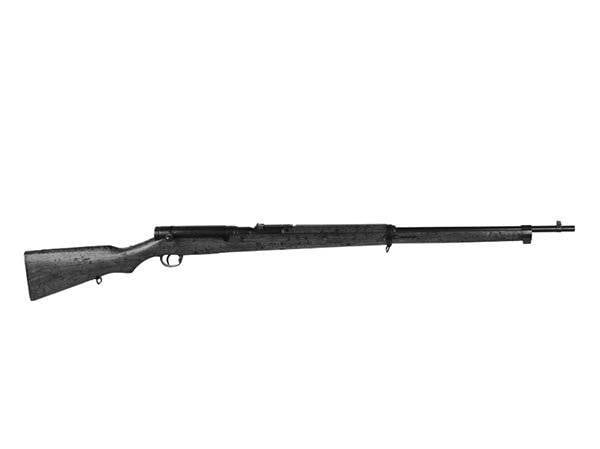
When the Japanese ambassador asked about the concessions in question, the minister hinted that the Russian government was ready to give the southern part of the Chinese Eastern Railway, the Chinese Eastern Railway, which crossed the entire north of China and belonged to Russia, for Japan with one million rifles. Some Russian generals, frightened by the German offensive, were ready to go even further in those August days. Thus, Mikhail Belyaev, Acting Chief of the General Staff, speaking to the Japanese military attache Odagiri, said that Russia was supposedly ready to “reward” Japan for selling 300 thousands of rifles to the Japanese of the northern half of Sakhalin Island, which was divided in half between Russia and Japan.
The Japanese, after such hints, tried to go even further - Japanese Prime Minister Okuma Shigenobu (by the way, one of the founders of the Mitsubishi Concern) directly stated to the Russian ambassador in Tokyo Malevsky-Malevich that Japan was “ready to take over the protection of Russia's Far Eastern possessions in order to send Russia's liberated Far Eastern troops on the European front. " In fact, it was a direct offer to donate to the Japanese the entire Far East in exchange for military assistance. To the credit of Malevich, he did not even consult with Petrograd, and immediately in a diplomatic expression gave the Japanese prime minister a real scandal, explaining that such a proposal was "inappropriate." More such brazen projects were not voiced by the Japanese side.
However, the Japanese agreed to sell Russia a new batch of weapons. In early September, 1915 was contracted to supply the 150 with thousands of new Japanese rifles and 84 million cartridges. Russia paid for them 10 million rubles in gold, and thanks to this money, the Japanese army bought new machines for their arsenals.
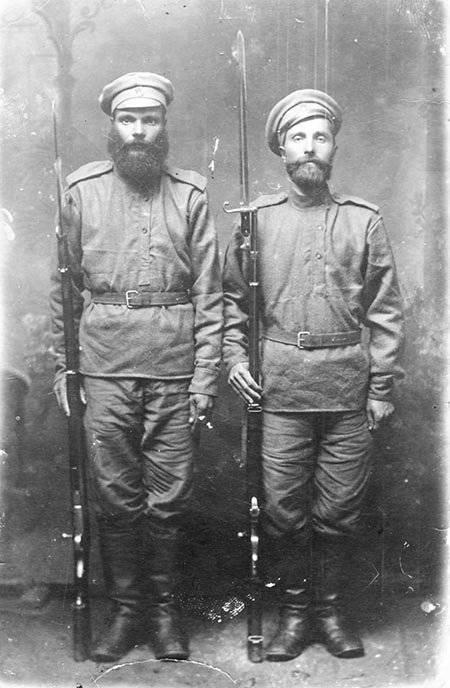
Almost all Russian payments for military orders in Japan first passed through the London branches of Japanese banks. But in October 1915 of the year, the Japanese military department transmitted to the Russian ambassador in Tokyo a wish, and in fact the requirement to continue to pay directly in Japan, not by bank transfer, but by gold, by transferring it to the mint in Osaka. From now on, payment for military supplies went to the Japanese islands directly from Vladivostok - gold coins and bullion were transported by a special detachment of Japanese military vessels under the command of Rear Admiral Ide Kenji.
The total number of rifles purchased by Russia from Japan by October 1915 of the year was 672 400 units. Of course, this did not satisfy all the needs of the Russian army, but, as the proverb says, “road spoon for dinner.” Rifles then at the front were a terrible deficit, turned into a lot of blood. All Russian military plants in the autumn of 1915 produced no more than 120 thousands of rifles per month with a need of at least 200 thousands. And there were no other supplies of guns from abroad, except Japanese, until the autumn of 1915.
"Japanese divisions" of the Russian army
Military historians have calculated that by the end of the first year of the war, every tenth rifle on the Russian front was Japanese. General Nikolai Golovin, one of the leading military theorists, later recalled: “In October, 1915 from the 122 infantry divisions, those with numbers over the hundredth, are armed with Japanese rifles. Soldiers call them Japanese divisions. ”
Initially, Japanese rifles were sent to the rear, spare battalions and state militia brigades. Thus, in the autumn of 1915, in heavy fighting with the advancing Germans near the fortress of Ivangorod (Deblin), not far from Warsaw, the 23 I militia brigade armed with Japanese rifles bravely fought. True, the shooting tables for the “Arisaks” (with data on the amendments of the sight depending on the distance) were first translated incorrectly from the Japanese, and the units armed with them did not differ, until a few months later the headquarters did not correct the error.
At the end of 1915, the command decided to concentrate the “Arisaki” on the Northern Front, which fought in Poland and the Baltic States, covering the most important direction to Petrograd from the Germans. The concentration of Japanese rifles made it easier to supply them with cartridges and organize repairs faster. Japanese rifles re-equipped and sailors of the Baltic Fleet, to transfer them "Mosinki" in the front parts.
Japanese rifles were supplied with Japanese bayonets, which differed from the Russians. It was actually a dagger with a 40 blade, see, only 3 cm shorter than a needle Russian bayonet. Thanks to these bayonets and another form of shutter, Japanese guns can be easily distinguished from old Russian photos.
At the end of 1915, Japanese rifles came to Russia and from the other side, from the west of Europe. The fact is that in the 1914 year, fearing a shortage of rifles, 128 of thousands of Japanese “Arisak” and 68 million England purchased cartridges for them. But British industry has increased production, the shortage of rifles they did not happen, and the allies on the "Entente", frightened by the retreat of the Russian army, agreed to transfer the Japanese weapons to Russia. The first 60 thousands of “Arisaka” rifles arrived in Russia from England in December 1915, the rest in February 1916. In addition, British factories agreed to accept the Russian order for the production of ammunition for Japanese rifles.
Thanks to these measures, by the spring of 1916, the two Russian armies on the Northern front - the 6 and 12 - were completely transferred to the Japanese rifle. The 6 Army I defended the coast of the Baltic Sea and the approaches to the capital, and the 12 Army fought in the Baltic States, covering Riga. It was here, in the 12 Army, of the local volunteers that a separate division of the "Latvian riflemen" was formed, which became famous during the civil war. But few people know that the Latvian riflemen, who in November 1917 were guarding Lenin in Smolny, were armed specifically with Japanese rifles. With their “Arisaks”, the Latvian arrows later successfully wage the entire civil war.
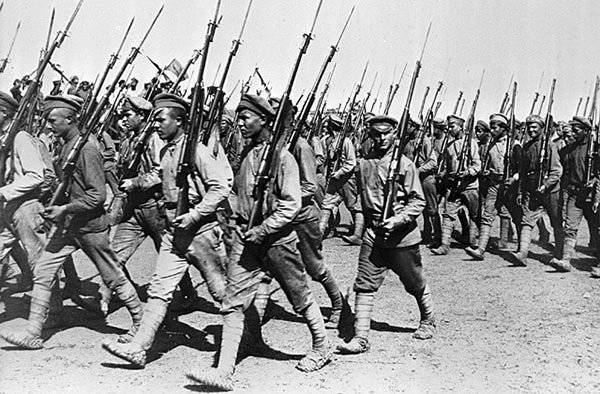
The whole 1916 year in Petrograd and Tokyo were negotiating a new Russian-Japanese treaty. The Japanese offered to the Russians to sell part of the railway of the CER (and in fact cede part of their zone of influence in Manchuria) for 150 thousand rifles. But by that time the most acute weapon crisis at the front had passed, the Russian government was able to buy rifles not only in Japan but also in other countries, including the United States and Italy. Therefore, the Russian Empire refused to give up its zone of influence in the north of China.
However, our country continued to pay Japan generously for arms supplies. In 1916, Russian gold payments for military orders approached 300 million rubles and amounted to over half of all budget revenues of the Japanese Empire that year. In the Land of the Rising Sun, the royal authorities purchased not only rifles, but also artillery guns, shells and a host of other military equipment. For example, only at the end of 1915, Russia bought one million shovels from the Japanese and 200 thousands of hand axes - in Russia they even turned out to be a deficit and badly needed to equip sappers at the front.
Procurement of Japanese rifles continued into the 1916 year, and even after the February revolution of the 1917 year. Immediately before the revolution, Russia bought 93 thousand rifles in Japan and ordered 180 thousand new “Arisak” from factories in Tokyo. Cartridges for them were bought not only in Japan, but also in England, which from the spring of the 1916 of the year to October of the 1917 of Russia supplied them to almost half a billion.
As a result, by February 1917, Russia bought almost 820 thousand Japanese rifles and almost 800 million rounds of ammunition for them, which was enough to arm 50 divisions. By that time, the Arisaks made up a quarter of all rifles purchased abroad. The weakness of Russian industry led to the fact that during the First World War, our army was armed with nine different rifle systems with seven types of cartridges. For 1914 — 1917 years, Russian factories produced 3,3 million rifles, and abroad they had to buy 3,7 million. For comparison, Germany and Austria produced 10 million rifles at their factories.
Russia's last major contract for the purchase of guns in Japan was signed just two months before the October Revolution - 5 of September 1917 of the year bought 7 thousand Arisac for 150 million gold rubles. History sometimes loves deliberate symbolism - the Russian steamer "Simbirsk" sailed from Japan with the last batch of 20 in thousands of Japanese 7 rifles in November, November 1917 of the year.
“The shutter seemed to stick and it had to be kicked off”
The October Revolution and the Brest Peace, however, did not complete the history of Japanese rifles in Russia. This weapon was used by all parties to the civil conflict on all fronts. So, in September 1919, the Kolchak government signed a loan agreement with Japanese banks for the purchase of 50 thousand Arisaka rifles and 20 million cartridges for them monthly. The “Supreme Ruler of Russia” planned to pay with gold and the granting of concessions to Japanese firms on Sakhalin and in Primorye.
Significant stocks of Japanese rifles and cartridges in warehouses in central Russia went to the Soviet government, which armed them with parts of the Red Army. Therefore, in the same 1919 year, when Kolchak bought the “Arisaki” from the Japanese, the Southern Front of the Bolsheviks, reflecting the attack of Denikin's armies on Moscow, spent the month of fighting 25 million Russian ammunition for “mosinki” and 8 million ammunition for “Arisaka”. That is, almost a third of the Red Army soldiers were armed with Japanese rifles.
The First World War scattered "Arisaki" throughout the former Russian Empire. Japanese rifles from the arsenals of the Baltic fleet went to Finland, some of their Finns were handed over to Estonians and until the 30s they were armed with border guards of independent Estonia. Japanese rifles even fell into the army of Ukrainian nationalists Petlyura. The future poet of the Ukrainian SSR, who fought in her ranks, Vladimir Sosyura later recalled the use of the old “arisak”: “They began to shoot, but the Japanese-style rifle after the second shot became almost unsuitable for shooting. The shutter seemed to be stuck, and it was required to beat off with his foot. "
Mentioning Japanese rifles and Alexei Tolstoy in the novel “Going on a Chill” dedicated to the Civil War: “I ordered soldiers to give trophy corned beef with beans, sweet canned milk, and take new Japanese carbines to replace, as far as possible, with old rifles riveted in battles ".
After the civil war, the Bolsheviks took into account the mistakes of the Tsar's command - all foreign rifles, even the oldest and most worn out, including the “Arisaki”, after 1921, were carefully assembled and laid down in long-term storage facilities. In the mid-twenties, several thousand Japanese rifles from these warehouses were transferred to China via connections of the Comintern.
Japanese rifles of Russian soldiers went to the last battle in 1941 year - in July they armed the people's militia of Kiev and the militias in the Smolensk region. In September, the 1941 “arisaks” were transferred to the armament of some parts of the Moscow militia and partisan detachments of the Crimea.
However, in the USSR with the production of small arms things were much better than in the Russian Empire, and the Moscow militia quickly rearmed with Soviet weapons. Therefore, part of the stock of the old “Arisak” survived even World War II, and, being re-pledged to warehouses, they were even taken into account in the mobilization plans of the hypothetical Third World War. Before the collapse of the USSR, a number of Japanese rifles were stored in the warehouse of the Carpathian Military District near Shepetovka. In 1993, in a separatist Ukraine, these World War I rarities were melted down.
Information